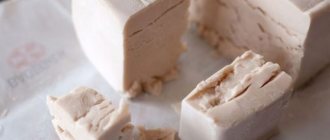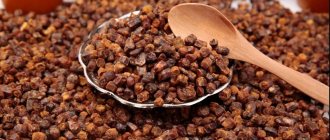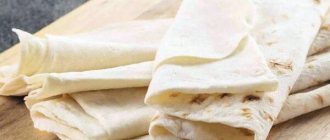Mango fruits are available for purchase all year round, and therefore they are rarely stored in large quantities for future use. But sweet and juicy tropical fruits are perishable products, which means they require certain storage conditions right from the moment of purchase. Simple methods will help you properly preserve mangoes whole, unripe or cut.
What fruits are suitable
It is a common misconception that the ripeness of a mango is determined by its color. In fact, ripe fruits can be orange, green, or red. The shade depends on the variety. Ripe fruits are distinguished by a number of other characteristics:
- By the emanating rich, pleasant aroma. In unripe fruits it is either absent or very weak.
- By the elasticity of the peel. When you lightly press the fingertip onto the fruit, the pulp gives in slightly to pressure, without falling in, and then immediately restores its original state. Fruits that require ripening are very hard to the touch.
Regardless of the purpose of purchase (for quick consumption or long-term storage), there should be no damage or roughness, dents, brown or gray spots on the surface of the selected mangoes. The skin should be uniform, smooth, and the flesh itself should be of uniform color.
How and where to store mangoes at home so that they ripen
If your plans do not include eating mangoes right away, it is better to buy unripe hard fruits and create conditions at home for them to ripen.
How and what to wrap
Using regular newspaper, a sheet of paper or a clean paper bag, unripe fruit can be made ripe and sweet. The fruit is wrapped in paper and left to lie at room temperature. It will become softer in a couple of days. Ripening occurs due to the release of ethylene.
It is important not to wrap the mango paper too tightly to prevent mold from forming. The ripeness of the fruit is periodically checked to ensure that it does not become overripe or spoiled. Ripening is judged by the appearance of a pleasant sweet smell.
Reference. You can put an apple or banana in a paper bag with an exotic fruit. They increase ethylene production and ripening occurs faster.
At what temperature
If the mango is unripe, do not immediately put it in the refrigerator - at low temperatures the fruit will definitely not ripen. And if you keep an unripe fruit in the refrigerator for a long time, it will completely spoil. Even if the fruit becomes ripe in appearance, its taste will not be sweet, since at low temperatures the process of sugar formation in the fruit slows down.
In order for the hard, unripe fruit to become soft and ripe, it is left at room temperature +18...+23°C.
How to determine ripeness
The ripeness of the fruit is determined by several criteria:
- The smell of ripe fruit is very strong - sweet, honey.
- Elasticity. Squeeze the mango lightly: if the fruit is ripe, you will feel the flesh give in slightly when pressed.
- Uniformity of color. A red spot does not always indicate ripeness.
- Dark spots on the peel do not mean the fruit has gone bad. It may contain large amounts of sucrose.
If there are not too many spots on the peel, the aroma is pleasant, and the fruit itself is tight and smooth, it is worth purchasing.
In a refrigerator
The best place to store mangoes is in the fruit and vegetable drawer of the refrigerator. At a temperature of +3...+5°C, fruits will last for about 7-10 days without losing their properties. It is advisable to wrap each fruit in plain clean paper or parchment.
A plastic bag is not suitable for storing mangoes. A closed space without air circulation promotes the formation of condensation. This will quickly lead to product spoilage.
During long-term storage, fruits must be inspected regularly. If suspicious spots or inclusions are noticed on their surface, and the flesh has softened and emits a sharp, sugary odor, then they must be disposed of. These are the main signs of rotting. These fruits should not be eaten as food; you may get poisoned. If the fruit has just begun to deteriorate, the damaged areas on it must be removed, capturing a small part around them, and the rest must be used for its intended purpose.
The fruits should be washed only before use. If you neglect this rule, the shelf life of mangoes will be significantly reduced.
Mango storage conditions
Temperature conditions and the initial condition of the fruit affect the fresh shelf life of mangoes. If they were recently delivered from Thailand, they will remain at home for a relatively long time and will not lose quality.
For chain retailers, this is a fairytale story. Exotic foods that need to be stored are rarely sold there. When buying a mango, evaluate its condition. This will help determine the length of storage.
Below are the conditions for average quality fruit:
- Ripe, soft fruits are stored at temperatures above +18°C for a maximum of 3 days; at +5°C – up to 7 days.
- Unripe mangoes can be stored for about a week at room conditions.
- Use paper bags to store mangoes. Any other container will not work.
- Humidity should be relatively high, but not more than 60%.
It is worth keeping green fruits in the refrigerator if you decide to extend their shelf life. Fruits need to be ripened in a warm place.
Fresh fruits can be stored for 2-3 weeks in ideal conditions. If the mango has been sitting for several days and its quality has not deteriorated, you are lucky with the product.
If the fruit is unripe
At home, unripe mangoes will not ripen at low temperatures. At best it will remain in the same condition, at worst it will deteriorate.
It is better to keep unripe fruits in a dark and dry room with a room temperature of +18...+24°C and a humidity of about 80%. Place the fruits in a cupboard or cardboard box so that they do not touch each other, preferably by wrapping each one in clean paper.
The ripening period for mangoes will thus be about 3-7 days, depending on the initial ripeness. Fruits must be inspected regularly, removing spoiled ones. After ripening, store in the refrigerator.
To reduce the ripening time to 1-2 days, fruits that emit ethylene (bananas, peaches, nectarines, figs, etc.) can be placed next to unripe fruits. The same steps are used to ripen an avocado or ripen a quince at home.
How to properly store mangoes at home
Mango is a healthy fruit that contains many amino acids. It improves immunity, reduces the risk of cancer, and speeds up metabolism. The product is on store shelves all year round.
How long can ripe mango be stored at home and how to preserve its benefits:
| Storage type | Shelf life | The necessary conditions |
| At room temperature | Up to 3 days | Dark place (cupboard, shelf), temperature from +15 to +25 degrees |
| In a refrigerator | Up to 10 days | Compartment for fruits and vegetables or middle shelf of the refrigerator, temperature from +3 to +5 degrees |
| In the freezer | 3 months | Top shelf of the freezer, temperature -18 degrees |
| Cut fruit | 12 to 24 hours | Fridge |
| Processed fruit | 2 weeks - 6 months | Fridge |
To keep fruits fresh longer, they should be wrapped in paper - it absorbs excess liquid. Mangoes that are not fully ripe can be stored at room temperature for 1 month.
Storage at room temperature
Outside the refrigerator, ripe fruits can be stored for up to 3 days. To avoid spoiling, it is better to wrap them in paper (you can use parchment paper for baking) and put them in a dark place, the temperature in which is from +15 to +25 degrees. Do not keep ripe mangoes next to other fruits.
In a refrigerator
To prolong the freshness of the fruit, a cool place is best. Can be stored in the refrigerator in the fruit and vegetable compartment or on the middle shelf. Temperature from +3 to +5 degrees. You should not leave the product in a plastic bag, moisture will condense inside and it will spoil faster.
In the freezer
To extend the shelf life of exotic fruit, it can be frozen. In this form it can be stored for 3 months.
Here's how to freeze mangoes:
- Peel the fruit and cut into small pieces.
- Place the slices on a flat surface and put them in the freezer for 30-40 minutes.
- After the pieces have slightly frozen, place them in small pieces in vacuum bags or plastic containers.
To defrost, take the bag or container out of the freezer and leave it on the counter for 30-40 minutes.
After cutting
When cut, mango will remain fresh for no more than 1 day. The pulp in this state loses its quality and darkens, and how quickly this happens depends on the presence of a seed in it. If the stone is left in half, then a smaller part of the pulp comes under the influence of air, and vice versa.
Store the cut fruit only in the refrigerator on the fruit rack. The halves or slices are wrapped in cling film and placed in zip-lock bags or airtight containers (cut side up). And in order to keep the mango in a presentable form, for example, for serving, its cuts are first sprayed with lemon (lime) juice or olive oil. This slows down the oxidation process slightly.
If any signs of spoilage appear (unpleasant aroma, change in color, consistency, etc.), the product becomes unsuitable for food. All that remains is to throw it away.
Before cutting into a mango, it's best to make sure it's ripe. An unripe fruit cut into pieces will quickly deteriorate at room temperature, but will not ripen in the refrigerator.
Storage errors
Premature spoilage of mangoes is associated with the following storage errors:
- Storing ripe mangoes with other fruits. They secrete special enzymes that can only accelerate ripening and reduce the shelf life of the fruit.
- Storing unripe mangoes in the refrigerator. By stopping the ripening process, you will not increase the shelf life of the fruit. This way it will spoil without even reaching a mature state.
- Storage in a plastic bag. Replace it with parchment paper to prevent the fruit from rotting.
- Storing pitted. If possible, leave the kernel in the fruit so it will last longer.
By following all the rules and recommendations for mango storage, you can not only avoid its premature spoilage, but also preserve all the valuable properties present in the fruit.
How to choose the right one
The right choice of mango fruits is the key to their successful preservation. When purchasing this fruit, you need to pay attention to several criteria, including:
- optimal degree of maturity (indicated by a sweet taste and rich aroma);
- correct rounded shape;
- elastic and smooth peel (when pressed and quickly released, it should instantly return to its original state);
- uniform color of fruit pulp;
- no damage, dents, or dark gray or brown spots on the surface of the fruit skin.
Recipes for storage
Dear housewives, I prepare delicious desserts from mangoes: confiture, candied fruits, jam, marshmallows, marmalade. I share my favorite recipes with you.
Candied fruit
I’ll say right away that this is the longest, but not the most difficult option for preparation and storage.
- I cut the fruits into cubes 2-3 cm in size.
- I soak it in cold sugar syrup overnight (you don’t have to soak it if the fruit is sweet enough).
- I prepare the syrup from a glass of sugar + 200 ml of water.
- I put the mango in a colander and let the syrup drain.
- I place the slices on a baking sheet lined with cling film.
- Cover with gauze to prevent insects.
- I dry it in a ventilated area until it becomes marmalade.
- Sprinkle with powder or sugar.
- I store it in containers with a lid on a shelf next to bulk products.
The shelf life of candied fruits is 12-18 months.
Calorie content in 100 g of candied fruits is 314 Kcal.
Have you tried candied mango?
Not really
Confiture
Preparing the confiture will take you an hour and a half, no more, and you will get an amazingly tasty and aromatic product. The main conditions are ripe fruits and a good mood.
Ingredients:
- Mango – 2 pcs.
- Sugar – 1 kg.
- Water – 100 ml.
- Gelatin or agar-agar – 20-30 g sachet.
Cooking instructions.
- I peel the fruits.
- Cut into cubes 1.5-2 cm in size.
- I soak the gelatin in warm boiled water for 40 minutes.
- I cover the pieces with sugar for 5 hours.
- Then I boil it in an enamel container for 15 minutes.
- I remove it from the stove.
- Add the swollen gelatin to the pan and stir.
- I heat it to dissolve the gelatin, but don’t boil it.
- I put it hot into 0.5 liter sterile jars.
- I roll up the lids.
- I cool it upside down.
- I store it in a dark place.
The shelf life of confiture is up to 2 years.
Calorie content per 100 g – 27 Kcal.
Watch the video on how to make oriental jam with spices.
Paste
For this recipe, choose a soft and very ripe mango. Pastila is easy to prepare, inexpensive, and allows you to avoid throwing away overripe mangoes.
Ingredients.
- Mango – 1 kg.
- Sugar – 100 g.
- Water – 100 ml.
Cooking instructions.
- I peel the fruits and remove the pit.
- I don’t throw away the bone (I dry it and grind it in a blender), it’s useful as a seasoning for desserts.
- I cut into arbitrary pieces.
- I put it in an enamel cooking pan, preferably with a thick bottom.
- I add sugar, when the juice comes out, I put it on low heat.
- Cook, stirring constantly, until smooth (2-3 hours).
- Let it cool and spread cling film on a baking sheet.
- I spread it in a thin layer of 0.5 cm on a baking sheet.
- I dry it so that you can wrap it in a tube.
- I wrap it in cling paper and store it in the pantry.
Calorie content in 100 g of marshmallow is 333.33 Kcal.
Soft ripe mango puree
Do you love a tropical fruit, but it’s not available for sale in your region? Then try growing mangoes in your apartment and treat yourself to vitamins all year round.
Storing cut mango
Ripe pulp is not suitable for long-term storage, so it should be eaten within 24 hours after the fruit is cut. Remove remaining pieces to a plate and cover with foil or cling film. Then put the plate in the refrigerator. Mango will not have time to lose either taste or appearance for a day, so even after refrigeration it is pleasant to eat. Just keep in mind that the pulp perfectly absorbs foreign odors, so do not place it next to strong-smelling foods.
If you don’t feel like eating a fruit, then don’t rush to get rid of it. Blend the chopped pieces in a blender until mushy, and place the resulting pulp in a container, close with a tight lid and store in the freezer. You can freeze the peeled pieces whole: put them in a bag and tie them. Frozen mango can be stored for up to 3 months.
How to preserve mangoes longer
There are several ways to help preserve the taste and aroma of your favorite fruit for a longer period. The same storage and preservation methods are suitable for mangoes as for apples, pears, plums and cherries.
Dried slices
The fruit is cut into pieces and dried in a dryer or in the sun, after covering with gauze. If you soak the pieces in syrup before drying, you will get delicious candied fruits. Dried slices are stored in the refrigerator in a closed container for 6 months.
Jam or jam
The simplest jam recipe is to sprinkle chopped fruit with sugar, put on low heat and cook for 20 minutes. Other fruits or spices are added for variety. The jam is stored at room temperature for 1 year.
Paste
The fruit is boiled until thick, poured onto parchment and allowed to dry naturally or in a dryer. After this, store in the refrigerator for 2-3 weeks.
Confiture
The diced fruit is mixed with sugar and left for a short time until the juice appears. Then the mixture is put on fire, brought to a boil, a gelling agent is added and boiled for another 3 minutes. After cooling, the mixture is punched with a blender. The confiture is ready. It can be stored for 1 year at room temperature.
Marmalade
The chopped mango is mixed with sugar and left. When the juice is released, the mixture is put on fire and boiled to a puree. Then rub through a sieve and add agar-agar.
The marmalade is left to harden in individual molds or in a frame, and then cut into slices. Store it in the refrigerator for up to 7 days.
In sugar syrup
A thick syrup is made from water and sugar. Mango slices are dipped in syrup and boiled for 5-10 minutes. Wedges in syrup can be stored in the refrigerator for a week.
In salt water
For salads, mango is marinated in brine until it loses its color. In this form it can be stored for a week in the refrigerator.
Save unripe mangoes
If you have an unripe mango, you can wait for it to ripen and become sweet and tasty:
- Place the mango in a deep plate. Place it in a dark place at room temperature or put it in a paper bag. Leave the fruit to ripen for 4–5 days.
- If you want to speed up the ripening of a mango, add an apple to it on a plate or in a paper bag. Leave on the windowsill for 1-2 days. The apple releases substances that promote rapid ripening of the fruit.
- Check the mango every day to make sure the fruit is not overripe - lightly press it with your finger. Ripe fruit will press slightly when pressed.
- Do not cover the mango with film or put it in a plastic bag, otherwise it will quickly deteriorate, rot or rot. This packaging does not allow air to pass through.
Unripe mangoes should not be stored in the refrigerator; if the fruit ripens in such conditions, it will not be sweet and will have a grassy and unpleasant taste. Photo: dl4.joxi.net
Differences in storing mangoes from Thailand and Vietnam
The main countries supplying exotic fruits to the Russian market are Vietnam and Thailand.
Vietnamese mangoes, unlike Thai ones, are not as sweet. The consistency is delicate and thick, without coarse fibers. Often there are fruits that are sweet, but with hard fibers, or vice versa, with pleasant pulp, but not very sweet.
in Thailand , their taste is richer and sweeter. The pulp is tender, without fibers.
Despite the fact that fruits from these countries differ in taste, color and shape, they do not differ in storage. The methods listed above are suitable for both Thai and Vietnamese mangoes.
This is interesting:
What is chard, how to eat it correctly and how it can be useful.
What is a fig and what is remarkable about the fig tree.
Raspberries: beneficial properties of the berry and possible harm.
How to properly peel a mango
A good ripe mango from the store is served in many ways. If there is a seed inside, do not throw it away; you can grow a fruit-bearing tree from it.
Method one
Cut the fruit in half and make transverse and longitudinal cuts on each half with a knife to form a mesh, it is important not to cut through the peel. Then turn the fruit inside out and cut the cubes
This serving is ideal for salads, making smoothies, juices, cocktails and purees.
Method two
Peel the fruit, cut in half. Place the flat side on a cutting board and use a sharp knife to cut into slices. This is how mangoes are cut to serve as a dessert.
Method three
Cut the fruit in half; do not remove the peel. Using a special spoon for serving ice cream, cut out balls from the pulp. In this form, mangoes are served in fruit desserts.
Tips for choosing
Before buying a mango in the supermarket, take the fruit in your hand and examine it carefully. Never buy the first fruit you come across or products on sale: there is a chance of running into a “delay.” Ripe fruit can always be distinguished by obvious signs:
- it has a pleasant subtle aroma emanating from the skin;
- When you press your fingers on the pulp, you feel elasticity. The fingers should not fall inside, but the flesh should not be hard;
- There should be no damage or cracks on the skin. The skin is uniform and smooth.
Many people mistakenly believe that a ripe mango should only have an orange color. This is not entirely true. The fruit can be yellow, green, red in color - its color depends on the variety.
On the shelves of Russian stores there are most often mangoes brought from India, China and Thailand.











